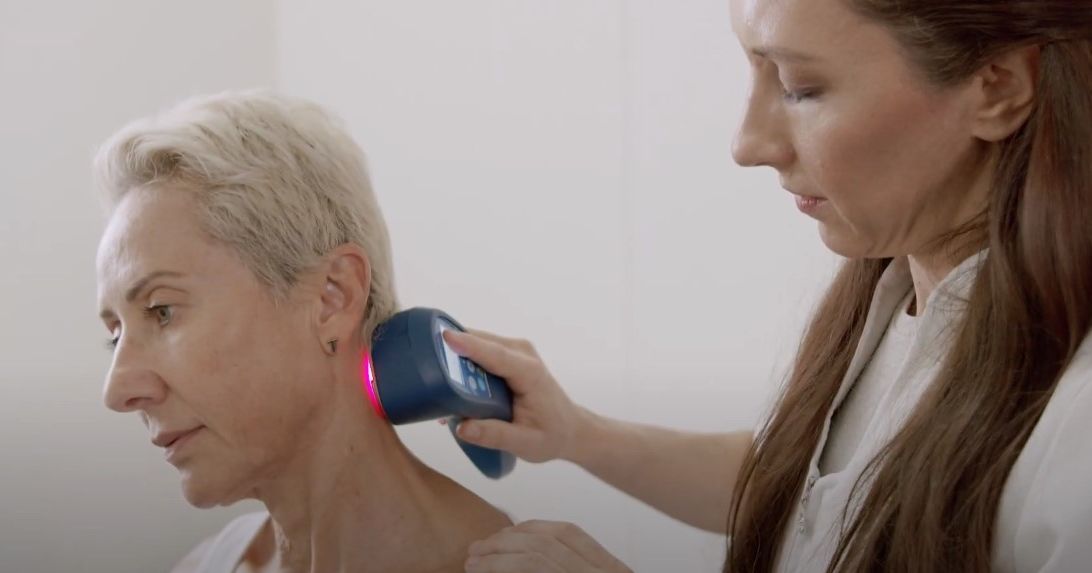Sacroiliac Joint (SIJ) pain/dysfunction refers to pain localised to the bottom of the spine connecting the sacrum to the pelvis. The joint pain is accompanied by improper movement at the joints and the pain may radiate down to the low back or legs. Patients generally present with pain over one or both of their SI joints ( joint at the lower back ) after straightening from a hunched/stooped posture, generally while bending to pick up/lift an object.
They may also experience a dull/aching pain in their lower back as well as stiffening or worsening pain when performing activities. An acute flare up of a chronic SIJ injury is often felt as a sharp and stabbing pain and relieved by sitting or lying down.
SIJ/lower back into hip pain has been associated with a few risk factors including:
a) Gait issues, for example leg length discrepancy, or scoliosis which can build up pressure upon the SIJ on one side.
b) Pregnancy may cause SIJ pain due to weight gain, hormonal changes causing the SI ligaments to relax
c) Prior low back surgery which again can displace pressure upon the SI Joint
d) Activities placing repetitive stress on the joint, for example weight lifting, regular heavy lifting and contact sports
e) Knee or hip replacement changing mechanics of lower limb
f) Prolonged sitting
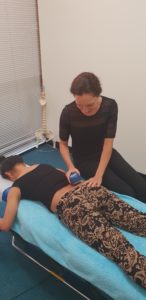
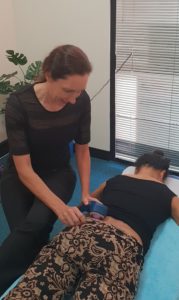
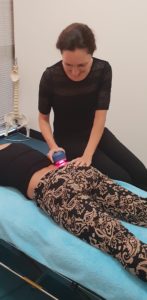
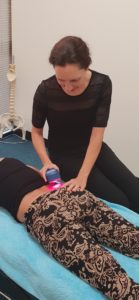
In order to differentiate Sacroiliac Joint pain certain tests are adopted to rule out the other conditions. Firstly the examiner palpates over the PSIS (posterior superior iliac spine) observing for any degree of tenderness. The examiner can also use two orthopaedic tests to differentiate the condition including iliac gapping test, where the doctor lies the patient supine (on their back) and pushes in a medial to lateral direction upon the ASIS (anterior superior iliac spine) to provoke pain and can also use the compression test which involves the patient lying on their side with the doctor pushing medially straight over the iliac crest.
Management of hip/lower back pain Sacroiliac joint pain has been proven to respond actively to conservative care including, ice or heat to reduce inflammation and adopting brief rest periods to reduce stiffness and pressure upon the joints. Medication has also been found to reduce mild-moderate SIJ pain including anti-inflammatory medications, for example ibuprofen and manual manipulation provided by a chiropractor can be highly effective if the Sacroiliac pain is caused by the minimal motion of the Joint.
Although recent studies have found that, Cold Laser Therapy also known as low-level laser therapy is also highly effective in the treatment of Sacroiliac Joint pain. Cold laser therapy (low-level laser therapy) aims at reducing the firing of nociceptors and modulates the inflammatory response for a faster healing time.
Cold Laser therapy utilises the latest technology to treat various amounts of soft tissue injuries. Its objective is to penetrate deeply into those underlying tissues without any surgical incisions and provide the patient with an increased flow of blood, oxygen and nutrients to the affected area to inhibit inflammation and promote a faster healing response.
The Cold Laser Therapy protocol is used to inhibit nociception and modulate the inflammatory response and improve microcirculation to enhance strong and uniform tissue repair. It is recommended that patients receive the cold laser therapy for 2 minutes at a time on different locations with sessions lasting approximately 20 minutes. For maximal recovery 1-2 visits are required per week with the total amount of sessions being approximately 10-15.
Cold Laser Therapy is a fast, non-invasive treatment option for soft tissue and joint conditions—including sacroiliac joint (SIJ) pain. At Lakeside Laser in Gnangara, WA 6077, we offer multiple emitters on site to deliver targeted therapy and help speed up recovery—all at an affordable rate.
We welcome visitors from across Perth, particularly from the northern suburbs including Ballajura, Wembley Downs, Bassendean, Bayswater, Ellenbrook, Aveley, Darch, Hillarys, Madeley, and Joondalup.
If you’ve been experiencing symptoms of SIJ pain or have been diagnosed with the condition, we encourage you to get in touch with our experienced and friendly technician, Dr Linda Schiller. To book an appointment or learn more, call 0468 429 111 or visit our website at www.lakesidelaser.com.au. We look forward to helping you feel better, sooner.


